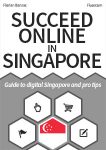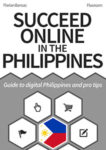The inclusion of a country’s population into its banking and financial system varies greatly across Southeast Asia. A well developed financial system makes some countries profit from the convenience of financial services, while opportunities arise to expand financial inclusion in less developed countries.
The term “financial inclusion” denotes the ability of people to access financial services, such as banking and insurance services. It is generally estimated that financial inclusion provides a benefit for the population by easing and securing financial transactions, as well as making them easily accountable and transparent.
How financial inclusion benefits ASEAN countries
More than half of the adult population of ASEAN does not have access to financial services. Many Southeast Asians are therefore unable to easily and conveniently do certain daily tasks, such as:
- send money to relatives,
- withdraw cash when needed,
- insure a house or vehicle.
As people who are usually not in the financial system are often poorer and living in more remote areas, expanding financial inclusion to reach them helps reduce inequalities at a country’s level by providing more means of using, saving, securing and earning money.
So governments try to push for a wider financial inclusion to reduce poverty and inequalities. In the less financially developed ASEAN countries, enhancing financial inclusion is thus one of the levers available to promote a more sustainable growth that benefits to a larger part of the population.
Business opportunities to expand financial inclusion in ASEAN
Financial inclusion provides more opportunities for those who are in the financial system. But the large “unbanked” population of several ASEAN countries makes them a new and attractive market for financial and telecommunications companies who can leverage alternative ways of reaching customers and provide them financial services.
For example, in the Philippines, both startups and large companies are working to reach new customers and deliver convenient and innovative financial services. They notably reach people in remote areas through their mobile phones through new ways to use and transfer money.
This next slide-deck presents some of the opportunities available for certain FinTech businesses to reach “unbanked” customers and deliver convenient, innovative financial services tailored for them.
Introduction to Financial Inclusion in Southeast Asia – summary
- Global views on financial inclusion – slide 2
- Defining financial inclusion – slide 3
Financial Inclusion “The provision of accessible, affordable and relevant financial products and services to individuals, households or groups.”
- Scope of financial inclusion – slide 4
- Barriers to financial inclusion – slide 5
- Southeast Asia banked population – slide 6
- Mobile phones penetration – slide 7
- Mobile financial services – slide 8
- Big data and data analytics – slide 9
- Market potential – slide 10
Video from December 2015 by the UN Capital Development Fund and presentation from July 2015 by the Singapore FinTech Consortium


![Overview of FinTech in Singapore [list-market analysis] Introduction to FinTech in Singapore](https://aseanup.com/wp-content/uploads/2015/10/Singapore-FinTech-150x68.jpg)
![Monitoring financial trends in Asia-Pacific [tool] Asia Pacific finance search data](https://aseanup.com/wp-content/uploads/2017/05/APAC-finance-search-data-150x68.jpg)





